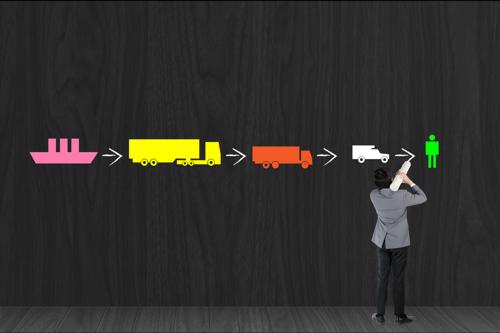To say that procurement, strategic sourcing, category management and vendor management professionals are “in-demand” right now would be a huge understatement (#yuuuge). The last couple of years, and the foreseeable future, have seen a huge demand for experienced procurement resources and not nearly the amount of available people to fill the roles. Just about everyone seems to be struggling to attract and retain good talent in procurement and strategic sourcing; from the small businesses to large corporations; even extending in to the procurement consulting firms.
If your company is blessed enough to have good procurement talent, chances are those employees are under attack from bigger companies with bigger salary budgets and procurement head hunters and recruiters that are aggressively trying to steal them away. Even if your company itself is one that has a great culture and salary budget, you may find that the big consulting firms and procurement business outsourcing providers and trying to snag your procurement team. And if you are investing in the next wave of college grads and early-career go-getters; good luck trying to find the right blend of salary, work style, culture, management technique and ability to create new challenges that “millennials” typically require to stay interested in your business. In short, creating and sustaining a motivated driven and successful strategic sourcing and procurement team is hard, very very hard.
Sales pitch time! For the reasons outlined above, Source One has been working to develop a solution to help procurement departments in need. We realized that not only is hard to staff and retain talent; in most cases, you likely don’t have the budget, and you’re more focused on the day-to-day aspects of conducting business that you can’t stay afloat. Often, we see companies resulting to using high-priced contractors, bringing in expensive consulting firms, paying enormous recruiting fees and even resulting to attempting to outsource their strategic functions to offshore outsourcing companies to save a quick buck. In all of those cases, those companies likely overpaid and still didn’t solve all of their challenges and projects. That’s why we launched
Procurement Help Desk; a new, more creative approach to handling your unpredictable procurement project pipeline.
Source One is a procurement service provider that has solution centers in both Chicago and Philadelphia, and has additional procurement experts across the globe. Our team collectively has category experts in just about every spend category. On top of that, we’ve got analysis, data scientists, negotiation experts, and procurement advisors who currently support some of the world’s greatest companies. The Procurement Help Desk provides a simple and easy to understand monthly program that allows companies of any size to tap into our resource pool. But, it’s not just people you’re getting access to; you gain access to our market intelligence, supplier databases, RFX templates, category strategies, benchmark data, technologies and more. That means that you’re not just getting a person; you’re getting a senior experienced procurement department in a box. Now that’s an out-of-the-box approach.
Here’s how it works. Source One’s Procurement Help Desk clients commit to a monthly amount of hours, similar to a standard consulting retainer model. However, there is a few differences. The help desk model allows you to tap into any type of resource; be they high-level consultants to help you with your procurement strategy and procurement transformation initiatives; experts in a particular category or commodity, inclusive of hard-to-find experts in areas such as Marketing and IT; and even lets you access more tactical resources to do things like execute RFP events or find new suppliers. Ultimately, you can spend less time planning and figuring out how you are going to get the job done and instead use that time to actually produce results.
Procurement help desk clients use us for all kinds of activities, big and small. Whether you just need 10 minutes of advice or someone to bounce an idea off of, or you need a full project team; we’ve got you covered.
Our Procurement Help Desk can support things like:
- Procurement Strategy Development
- Organizational Benchmarking
- Supplier or Category Benchmarking
- Ad Hoc Training
- Category Management
- Global Supplier Identification
- Building SOWs and RFPs
- Administering RFX events and score-carding responses
- Tracking savings
- Procurement project management
- Reporting and auditing
- And more!
Now here’s where it really gets good. As mentioned before, the Procurement Help Desk isn’t just about getting great people, it’s about getting great tools, technology, and data too. For businesses who need it, we can bundle in the Source One solution suite; which includes: a Spend Analysis and Opportunity Assessment Platform (
about.spendconsultant.com) and our soon to be announced e-sourcing tools and contract repository. We’ll give you licenses and access as part of the help desk solution. And for those of you that don’t need the technologies; don’t worry, by leveraging our procurement help desk, by the way of our team at Source One, you’ll gain access to RFX templates, benchmarking data, category data, supplier lists and other resources that you typically need to build on your own or license from a third-party.
Our
Procurement Help Desk solution is a managed services offering; similar to a more familiar IT Help Desk. We customize it for our clients, set up project request forms, tracking, and reporting solutions. You’ll get a singular account manager and point of contact, so your team doesn’t have to wonder who to turn to get help. Ultimately, we just become an extension, (not a replacement) to your team.
Our Procurement Help Desk solution’s pricing is dependent on your ongoing needs; but starts below the typical cost of employing one full-time resource. We’ll build a bundle of hours for you that meets your ongoing needs and can adjust as necessary as our relationship and your business needs grow.
Our Procurement Help Desk solution supports companies of all sizes, from your small businesses with a small budget that are looking to make a splash; to your large Fortune 500 companies that need surge support for a highly specific complex categories. We can help.
Contact Source One to learn more.























